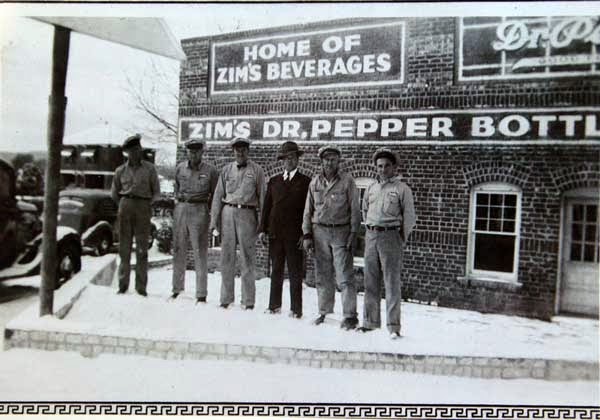Entering its
Second Century
By Jeff Clark
Drive enough back roads, you get used to seeing
boarded up churches. Cemeteries becoming pastures.
The church
fell to seven people in 1993. “We almost died,” member Peggy Vineyard told me. Then
those pioneer families started moving back when they retired. New friends joined
in.
Services
begin at 9:30 a.m. Sunday mornings. Get there 30 minutes early, it’s just you,
Gary Bragg and the cemetery out back. Bragg turns on the lights, makes coffee. Taylor’s
Chapel sits nine miles north of Comanche, off the pavement a far piece.
Folks file
in. The church bell stops ringing. “Sammy, lead us off in prayer,” Bragg asks
from the pulpit. Sammy Vineyard, five pews back, his family here over a century
asks God to get them started.
These are
Congregational Methodists. Self-governing. Call your own minister. Don’t tell
us what to do.
They are also
some of the friendliest folks I’ve met in a month of Sundays, most of 27 members
walking over, shaking hands. “I’m glad you’re here.” It’s hard to be invisible.
This church
started as a brush arbor in 1901 by Brother Jim Havner, a farming circuit
preacher. The area boasted a school, cotton gin and an 1881 graveyard. The
church bought two acres from Hood Taylor for $20 in 1902. “The old land is worn
completely out,” he said. “Ya can’t raise corn on it no more, and ya can’t
raise cotton on it no more. I’ll just let you Methodists have it to raise hell
on.”
There’s a
Prayer List passed out this morning, names read one at a time. One lady talks
about her son. Another about her recent operation. A conversation back and
forth, their concern is their prayer.
They sing
four hymns back to back, led by an energetic Mary Gillium whose high altitude voice
guides others through The Lilly of the
Valley. Four men and three little girls form their choir. Most live nearby,
a few from Comanche, a few picked up from the rest home. Ages range from late
40s to 93.
The regular
preacher Robby Stuteville is off with grandkids the Sunday I visited. He’s been
showing up one Sunday at a time for seven years. The church feels blessed to
have this retired school superintendent lead their flock, Baptist though he may
be.
“We pray
that Brother Robby doesn’t leave us,” Peggy confided. Member H. R. Helm walks
to the pulpit to bring the message this day. His thick Bible is packed with slips
of paper, notes to lead him.
“We should all be ready to go to
heaven,” he reminds, “but I want to stay alive a little longer.” Helm wants to
pass his lifetime of knowledge to grandkids, to his 13-year-old grandson.
They’ve spent Spring Break inventing a battery-powered pizza cutter.
“Make that decision,” he grows a
little louder. I brace myself for the dreaded altar call, but my fear is
misplaced. H.R. looks into his friends’ faces. “Why won’t we decide and ACT to
serve the Lord now?”
Helm’s stories are so honest
they’re painful, more like family than church.
The first church house was built in
1902. The plan called for the church to face south, “but the wind blew so hard
it turned the church around to face west. Members discussed trying to turn it
back, but they decided the Lord had a hand in it, and they let it stand the way
He left it.”
A tabernacle was added in the 1930s,
the current chapel rising in 1948. They added a fellowship hall, built a new
tabernacle, dug a well and installed air conditioning in 1960, restrooms and a
steeple in 1993. Eleven stained glass windows were added by 1996.
“I remember that my grandpa Samuel
Charles Vineyard sat in the ‘A-men corner,” Irene Day remembered. “And when he
prayed he would kneel facing the back of the pew. When he finished he would be
on his knees with his hand raised. I thought Grandpa knew the Lord better than
the preachers.”
“You feel the love of God here,”
Peggy Vineyard said, “and the love of the people. That’s the way it’s always
been.”
That old church saw ice cream
socials, pulpit-pounding revivals, shaped-note singings and dinner on the
grounds for many decades. James Chapman remembered, “They got to know and love
each other at events like these, and they were there for each other when
sickness and grief came to call.”
They were there for each other,
last Sunday.
Taylor’s Chapel baptizes folks in
the stock tank by the cemetery. The chapel saw a wedding two years ago, periodic
funerals, luncheons and baby showers. They teamed up with Broken Bronc
Cowboy Church
Thirty minutes after the church
bell began this service, it’s over. It normally runs longer, I’m told. Members
walk to the fellowship hall to visit. Thirty minutes after that, the parking
lot is empty, save Mr. Bragg, shutting off lights, getting ready to go again
next Sunday.
This country church ain’t dying.

No comments:
Post a Comment